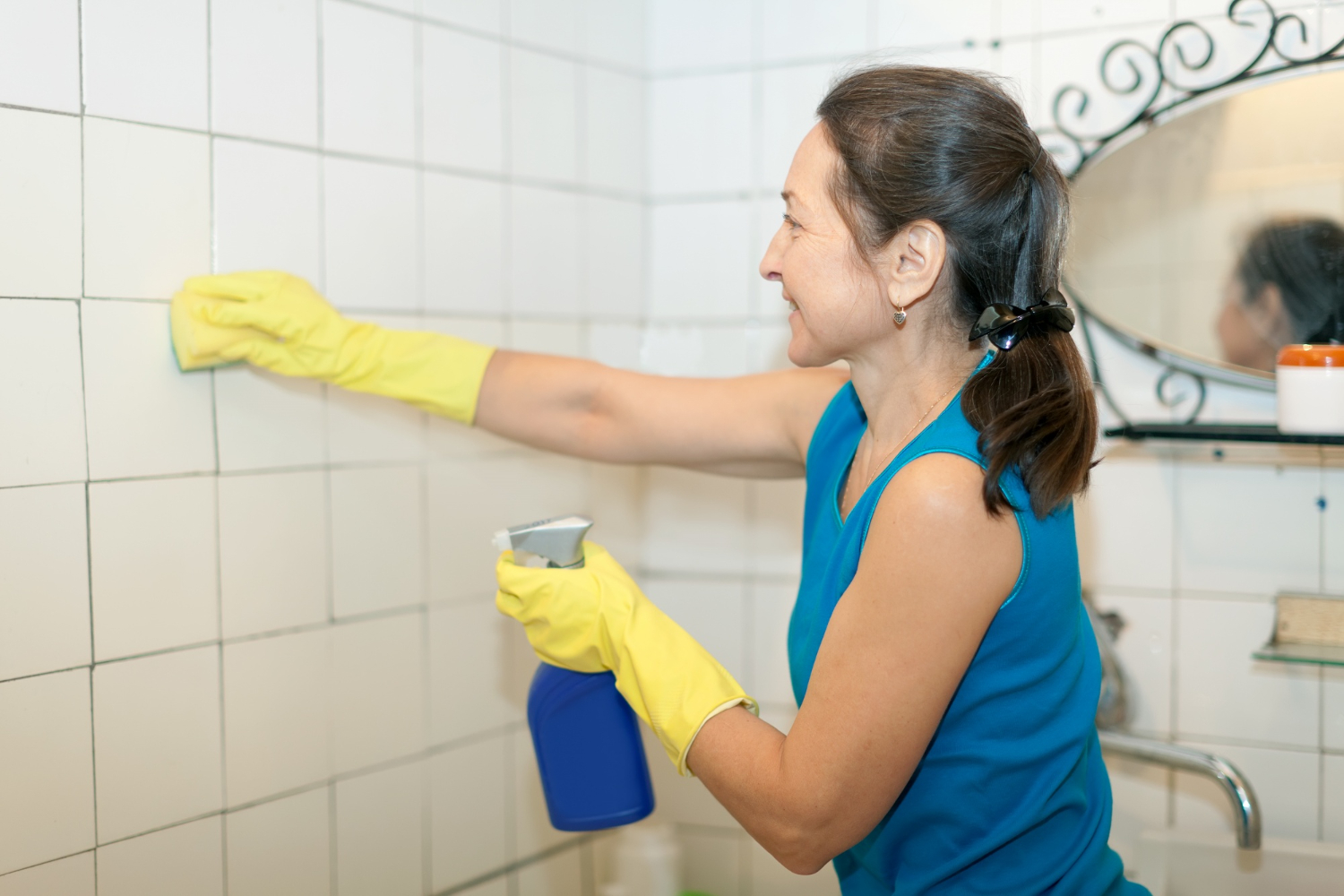Bathrooms can easily become a breeding ground for mould, especially on tiles where moisture tends to linger. Mould is not just unsightly; it can also pose health risks and lead to unpleasant odours. Keeping your bathroom mould-free is essential for both hygiene and aesthetics. With a few handy tips, you can tackle mould before it becomes a problem.
Proper ventilation plays a pivotal role in preventing mould growth. When steam and water droplets don’t evaporate, they create the perfect environment for mould to thrive. Ensuring your bathroom is well-ventilated helps keep the space dry and less inviting to mould. But that’s not all—daily cleaning and maintenance are just as crucial.
In addition to daily care, adopting some long-term strategies can make a huge difference. Choosing tiles that resist moisture and keeping up with grout maintenance can prevent mould from taking hold. By understanding what causes mould and how to tackle it, you can keep your bathroom fresh and clean with ease.
Understanding Mould Growth on Bathroom Tiles
Mould is a common problem in bathrooms because it thrives in damp, warm spaces with poor air circulation. Tiles, particularly in showers and near baths, often stay wet, making them a favourite spot for mould to settle. It feeds on soap scum and organic residues left behind from daily use. The grout lines between tiles are especially vulnerable, as they’re rough and can trap more moisture and dirt.
The health risks of mould should not be overlooked. Apart from creating unsightly patches, mould releases spores that can aggravate allergies and respiratory issues. It can lead to sneezing, skin rashes, and irritation to the eyes and throat. People with asthma or weakened immune systems may find their symptoms worsening. Thus, preventing mould is not just about keeping your bathroom looking spotless; it’s also about ensuring a healthier living environment.
Mould can spread quickly if conditions are right, so understanding why it forms helps in devising strategies to combat it. Identifying problem areas and implementing preventative measures are crucial steps in keeping mould at bay and safeguarding your family’s health.
Daily Practices to Keep Mould at Bay
Daily upkeep can significantly reduce the chances of mould invading your bathroom. One of the most effective practices is ensuring proper ventilation. Here are some techniques:
1. Use an exhaust fan during and after showers to help clear out steam and moisture.
2. If you lack a fan, open a window or door to let fresh air circulate.
3. Wiping down walls and tiles with a squeegee or towel after use also helps remove excess water.
Proper shower and bath maintenance are equally important. Regularly clean bath mats, shower curtains, and any fixtures to prevent mould-friendly residues from building up. Take a moment to dry these items after each use. Keep an eye out for pooling water around bathtubs, sinks, and toilets, as this can increase humidity and promote mould growth.
Make these practices a part of your routine to create a bathroom environment that mould finds hard to thrive in. Regular attention not only prevents mould but also keeps the space smelling fresh and looking welcoming every day. Consistent effort can make a big difference in maintaining a healthy, mould-free bathroom.
Cleaning Tips for Mould Prevention
Keeping your bathroom tiles mould-free requires an effective cleaning routine. Regular cleaning not only helps maintain the aesthetic appeal of your bathroom but also protects against the health risks of mould exposure. The right cleaning products and natural remedies can keep mould growth in check.
Recommended Cleaning Products
Select products that are specifically designed to prevent mould. Antifungal sprays and cleaners are easily available and work efficiently. When choosing a cleaner, look for those that contain bleach or ammonia for killing mould spores on contact. Here are some product types that can help:
– Mould-Killing Sprays: These are pre-mixed solutions that can save you the hassle of mixing your own cleaning agents.
– Bleach Solutions: Dilute bleach with water for a potent mould-killing effect.
– Vinegar-Based Cleaners: These are great for regular maintenance and can prevent mould from growing back.
Natural Remedies for Mould Prevention
If you prefer a more natural approach, several kitchen staples can help keep mould at bay. These remedies are easy to use and safe for most tile materials:
– White Vinegar: Fill a spray bottle with undiluted white vinegar and spray it onto the mouldy areas. Let it sit for at least an hour before rinsing.
– Baking Soda: Mix baking soda with water to create a paste. Scrub the mouldy grout with this mixture, then rinse off.
– Tea Tree Oil: Combine a teaspoon of tea tree oil with a cup of water. Spray this mixture onto the affected areas, leave it overnight, and wipe clean.
These simple solutions, when used regularly, can prevent mould from returning and keep your bathroom healthy and fresh.
Long-Term Solutions for Mould-Free Bathrooms
Achieving long-term mould prevention requires some strategic interventions in your bathroom’s layout and maintenance routine. By investing in quality materials and regular upkeep, you can create a mould-resistant environment.
Installing Moisture-Resistant Tiles
Start by selecting tiles designed to withstand moisture. Porcelain tiles are an excellent choice for bathrooms as they are dense and less likely to absorb water. Some tips include:
– Non-Porous Materials: Look for tiles that are non-porous, as they offer a great defence against moisture penetration.
– Waterproof Grout: Use waterproof or epoxy grout to ensure moisture doesn’t seep through to the surfaces beneath.
Regular Grout and Sealant Maintenance
Proper maintenance of grout and sealants extends the life of your tiles and prevents mould:
– Reseal Grout Regularly: Re-applying sealant every year or as necessary ensures continuous protection against moisture.
– Check for Cracks: Inspect your tiles regularly for any signs of damage, such as cracks or worn-out grout, and address them immediately.
– Replace Damaged Sections: Swiftly replacing damaged tiles or grout prevents water from reaching deeper layers.
By taking these long-term measures, you’ll maintain a clean and inviting bathroom space and minimise health risks associated with mould.
Conclusion
Maintaining a bathroom free from mould demands consistency and awareness. With the right cleaning habits and an understanding of mould prevention techniques, anyone can ensure a healthier and more pleasant environment in their home. Remember, it’s all about prevention and tackling issues head-on before they snowball into bigger problems.
To further enhance your bathroom space and ensure it remains mould-free, explore our range of moisture-resistant tiles at DB Tiles and Bathrooms. Our selection offers both functionality and style, making it easy for you to choose the perfect fit. Our dedicated team is ready to help you find solutions that suit your needs and beautify your bathroom.



